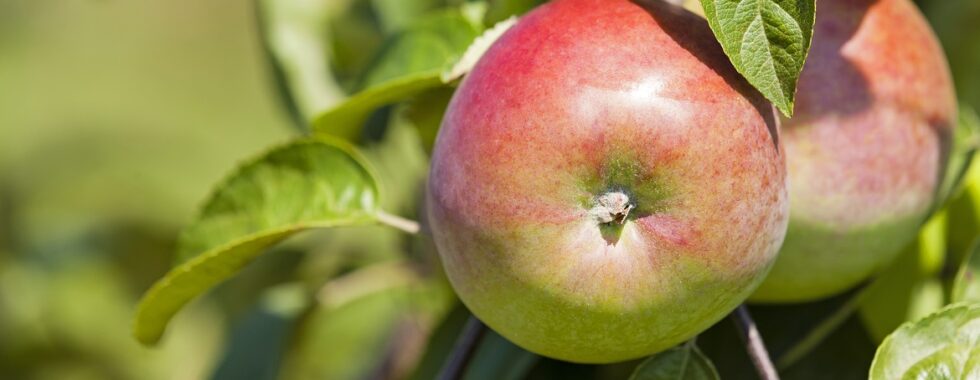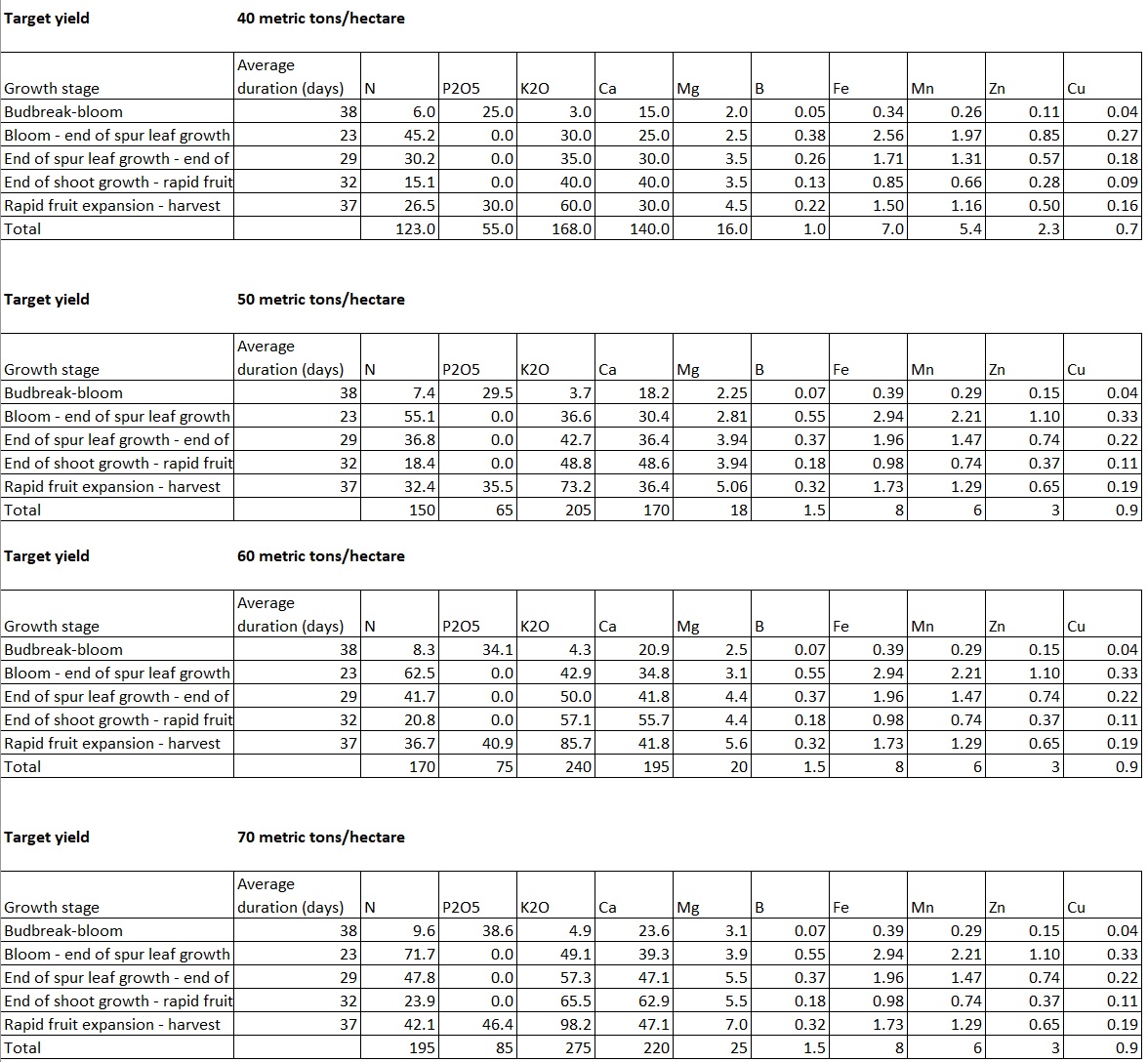Irrigation and fertilization of apple orchards
IRRIGATION OF APPLES
Irrigation of apples should be managed according to growth stages.
The main growth stages are:
- Budbreak-flowering
- Beginning of rapid shoot growth
- Beginning of fruit fill
- Harvest
- Leaf fall
Irrigation is particularly critical during the budbreak – flowering stage and during the beginning of fruit fill.
Irrigation requirements are determined by using the soil data, root system depth and evapotranspiration data.
The active root system of apple trees reaches a depth of 90cm. In dwarf varieties, it reaches up to 60cm (24 inch).
Irrigation management approaches
The non-limiting approach – this approach is the standard irrigation scheduling approach, based on crop evapotranspiration and soil available water.
The use of RDI (Regulated Deficit Irrigation) has shown to be an efficient technique to save water, without losing yield.
This technique involves maintaining a limited water stress during the rapid shoot growth stage. It helps in avoiding too much vegetative growth and shading in high-density plantations.
It is recommended to use monitoring equipment to monitor soil moisture level or monitor fruit size, to make sure that yield level is not compromised. Soil can be dried up to a tension of 200 cbar.
This approach cannot be applied where water quality is poor, as salts might accumulate in the root zone.
Under drought conditions, and as a short-term strategy only, the grower can apply minimal amounts of water, just for the survival of the trees. This obviously results in a significant compromise on the yield for the short term, but will allow trees to recover in the mid term.
Calculation of irrigation amount:
According the non-limiting approach, the required irrigation amount per tree can be calculated according as follows:
- Evaluating the irrigation water distribution pattern. For example, for drip irrigation we can assume a round pattern and, therefore, the irrigated area per tree is πr2, where r is the wetted area radius in meters.
- Required Irrigation amount per tree (L) = RAW x A, where A is the wetted area and RAW is the readily available water.
Example:
An apple orchard on a silt soil, with available water fraction of 0.2, is irrigated with bubbler irrigation system, and has a root system depth of 60cm. Water distribution width is 1.5 x 1.5m.
The orchard is in the fruit fill stage and ET0 is 5.5 mm/day. Calculated leaching factor is 0.15.
Calculate the required irrigation amount and frequency.
TAW = 0.2 x 1000 x 0.6 = 120mm
RAW = p x TAW
Factor p for apples at ETc of 5 mm/day is 0.5, therefore, RAW = 0.5 x 120 = 60 mm
A = πr2 = 3.14 x (1.5/2)2 = 1.76 m2
Required irrigation amount per tree = 60 x 1.76 = 105.6 Liters.
Account for the leaching requirement, irrigation amount = 105.6/(1-0.15) = 124.2 Liters.
Assuming 90% efficiency of the irrigation system, the adjusted irrigation amount is: 124.2/0.9 = 138 Liters.
What should the irrigation frequency be?
The irrigation frequency is calculated using RAW and ETc
ETc = Kc x ET0
Irrigation frequency = RAW/ETc
| Stage | Kc |
| Budbreak – bloom | 0.6 |
| Rapid shoot growth | 0.95 |
| Beginning of fruit fill | 0.95 |
| Harvest | 0.75 |
| Leaf fall | 0.55 |
FERTILIZATION OF APPLE ORCHARDS
For non-bearing trees:
| Nitrogen (N) | Phosphorus (P2O5) | Potassium (K2O) | |
| 1st year | 30 grams/tree | 20-80 kg/ha based on soil test results | 20-150 kg/ha based on soil test results |
| 2nd year | 60 grams/tree | 20-80 kg/ha based on soil test results | 70-150 kg/ha based on soil test results |
Nutrient uptake for different target yields
Values should be adjusted based on tissue and soil test results
FOLIAR NUTRIENT SUFFICEINCY RANGES (GENERAL)
| N (%) | P (%) | K (%) | Ca (%) | Mg (%) | S (%) | |
| Early/Mid season, Mid-terminal leaves | 1.9 – 2.5 | 0.15-0.5 | 1.3-1.8 | 0.8-2.0 | 0.25-0.5 | 0.15-0.5 |
| B (ppm) | Fe (ppm) | Mn (ppm) | Zn (ppm) | Cu (ppm) |
| 25-60 | 60-400 | 25-200 | 20-50 | 5-20 |



